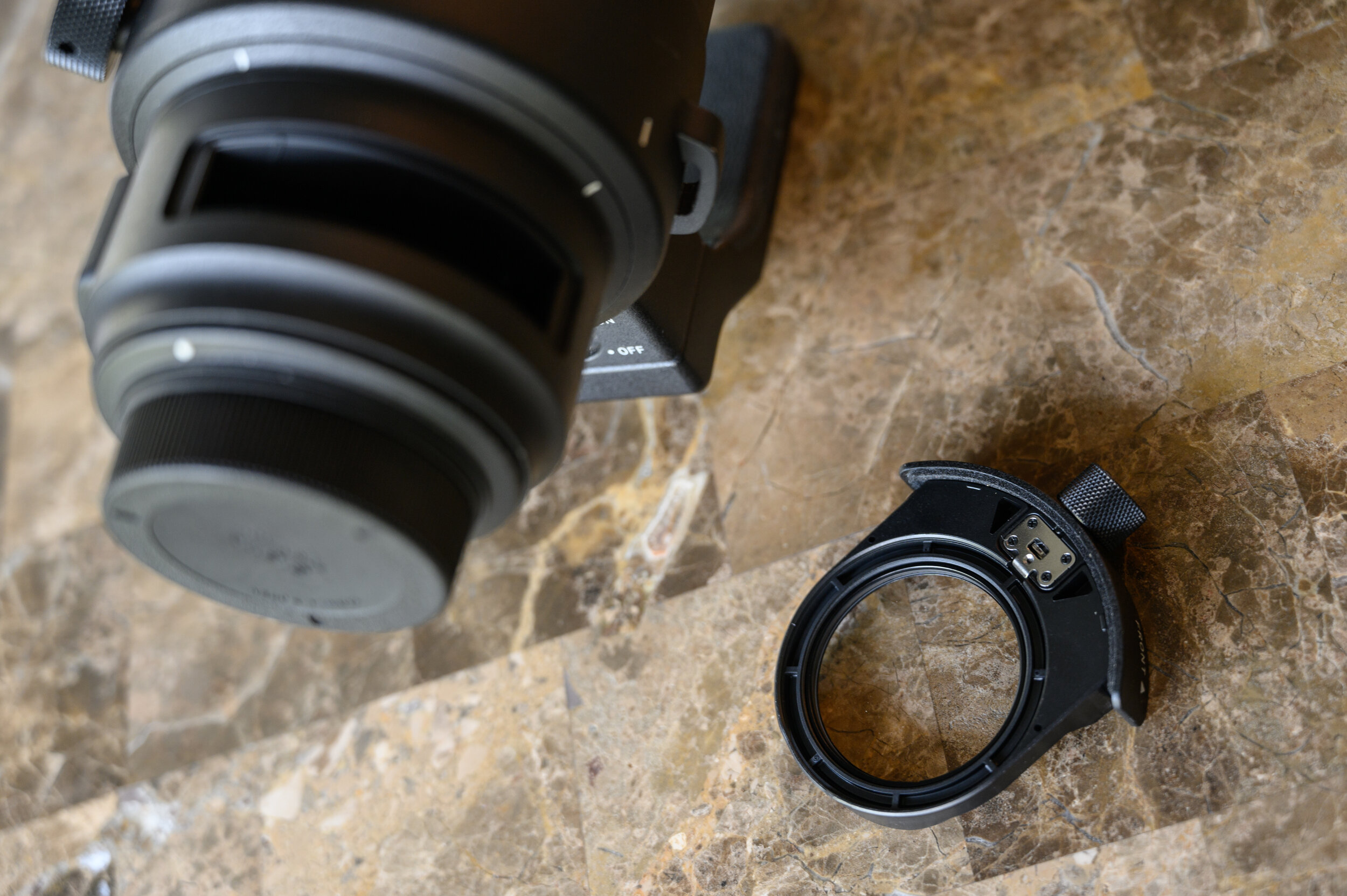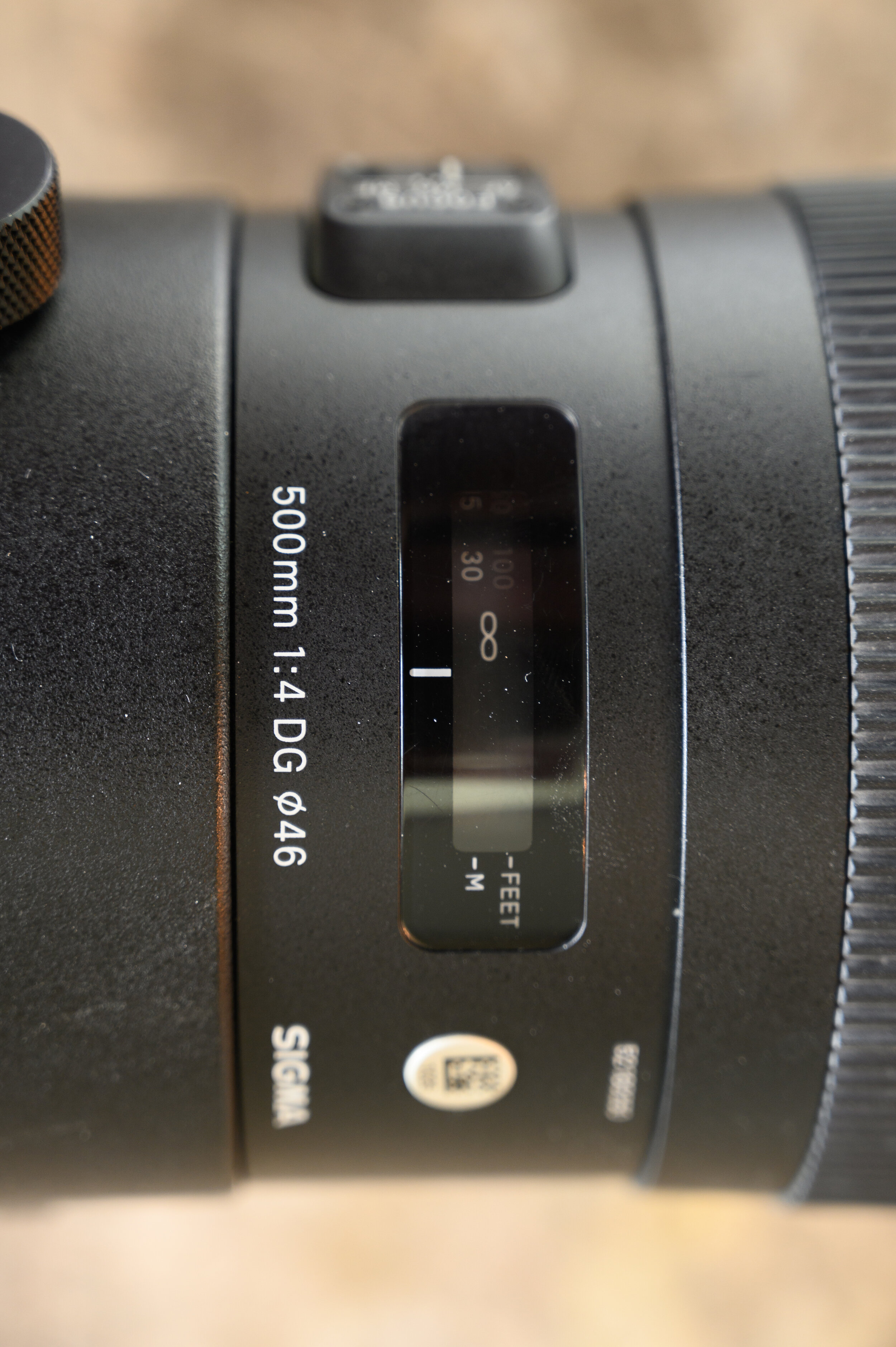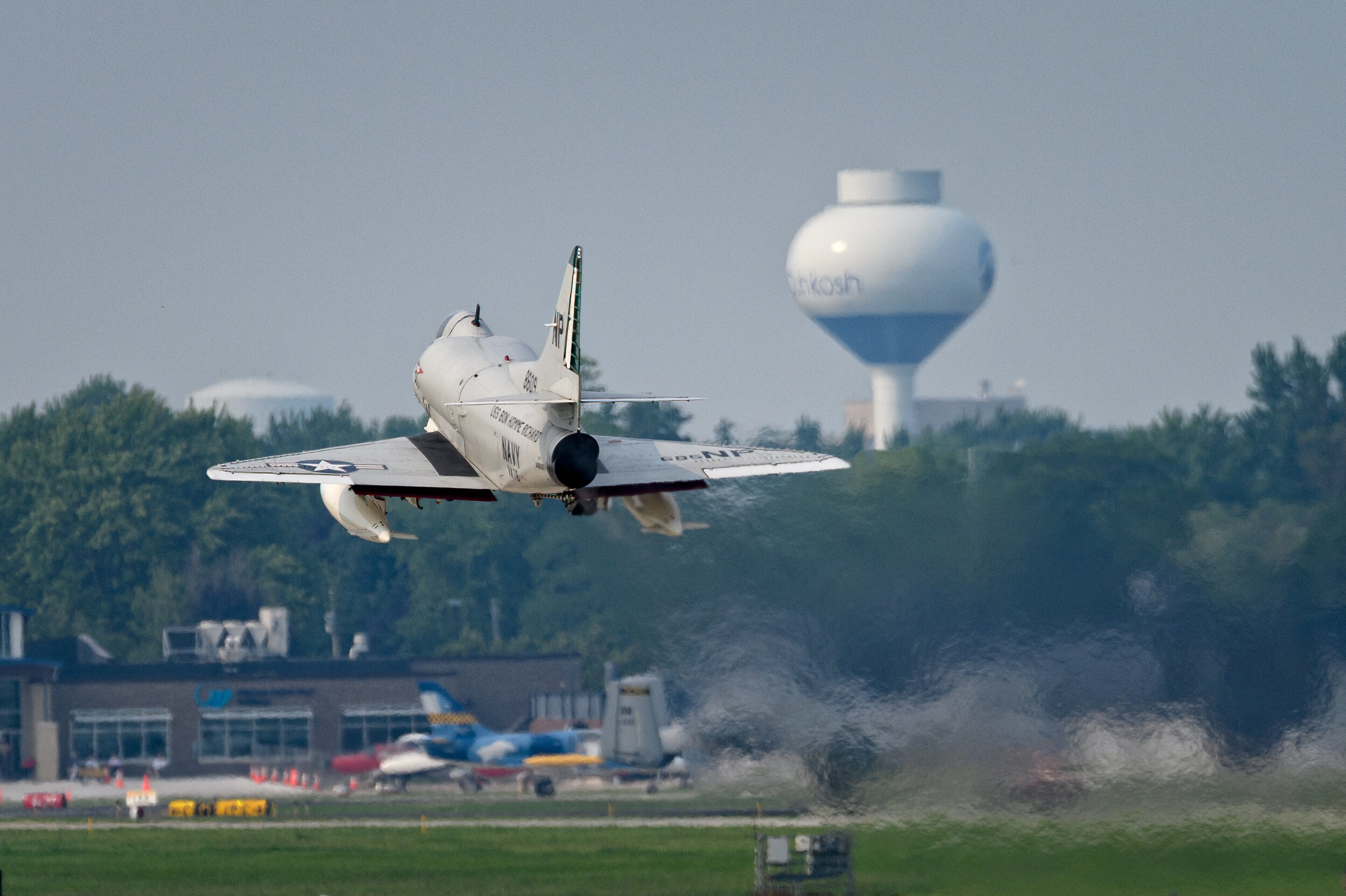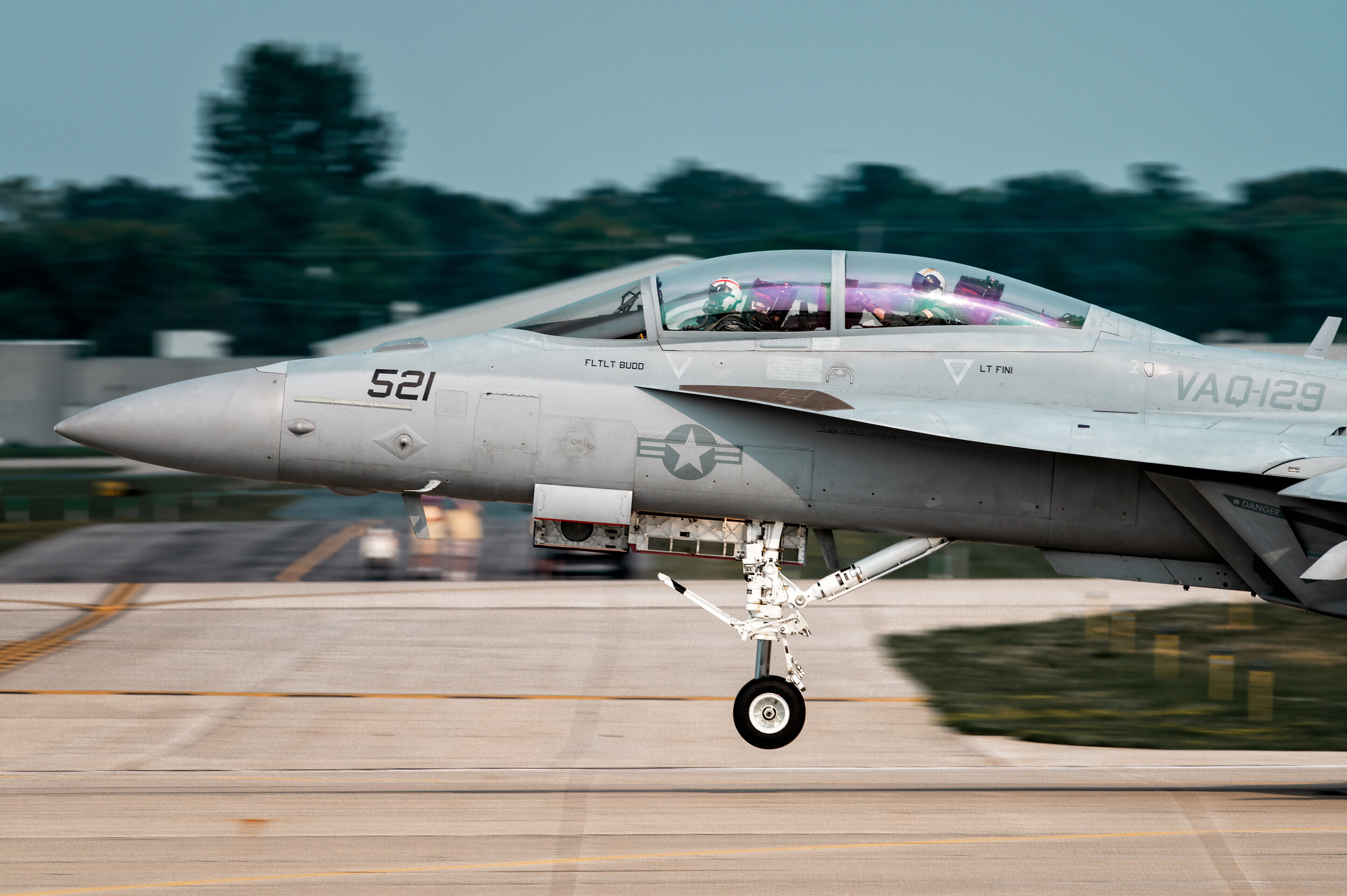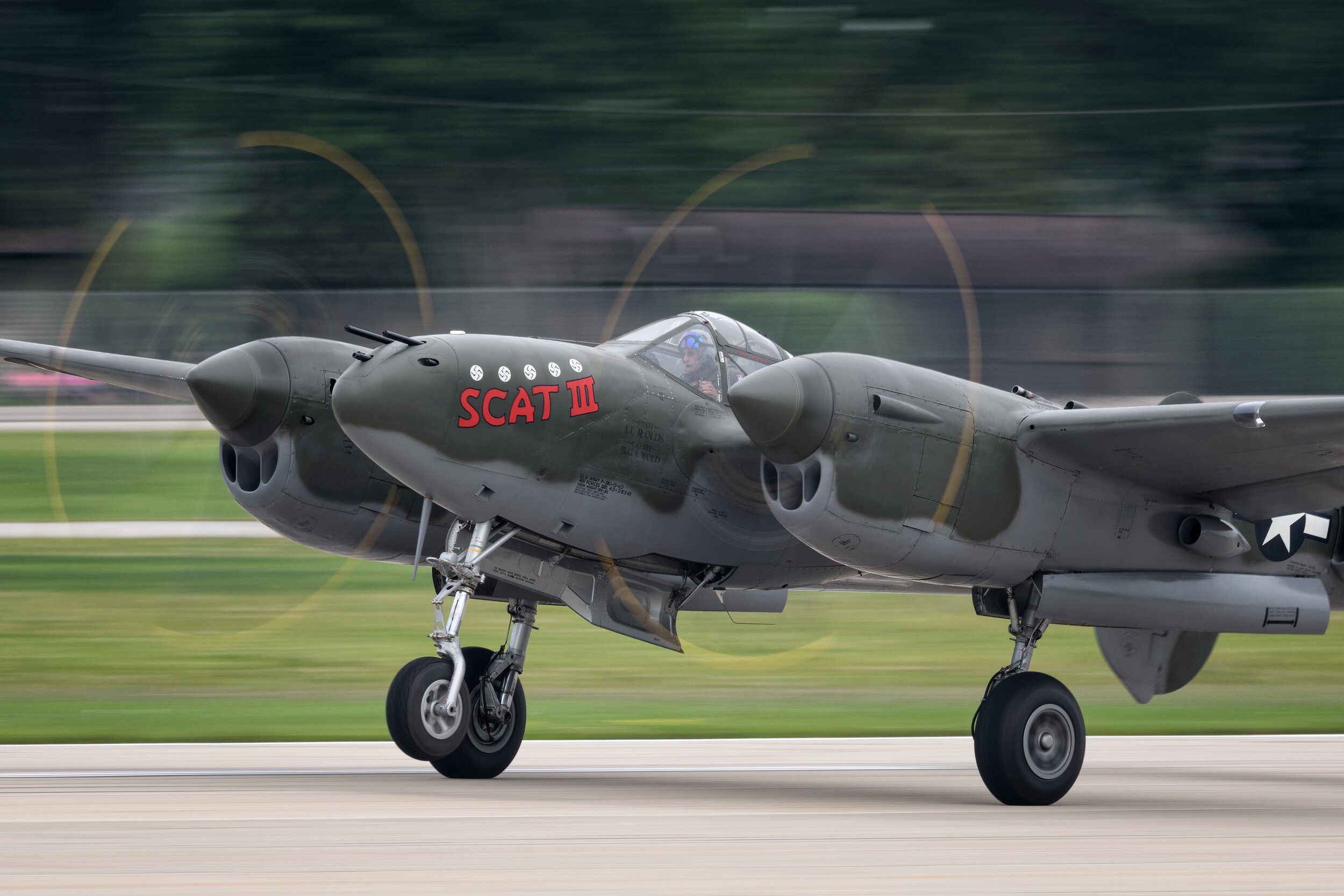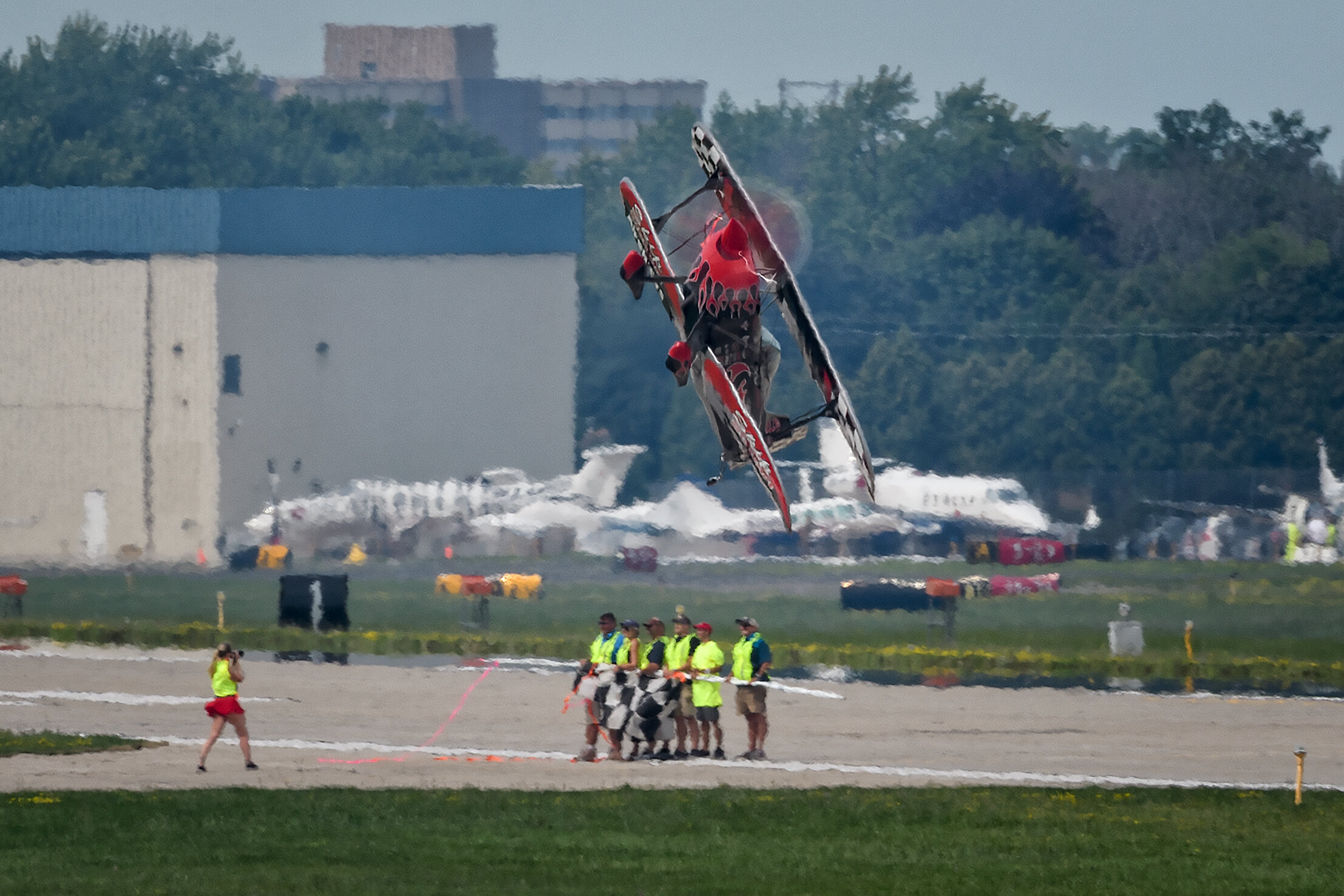Sigma 500MM Review
Words & Photos: Nick Moore
Editor’s note: The lens reviewed in the article below was provided on loan from SIGMA Corporation and no compensation was received in exchange for this review.
The last week in July is a sacred time in the world of aviation. In a typical year, over 10,000 aircraft and over 600,000 people descend on Oshkosh, WI for the Experimental Aircraft Association’s (EAA) annual convention, affectionately known as Airventure. I have had the privilege of volunteering as an event photographer for EAA since 2018. After a painful year off in 2020, 2021 would see the event return and I was there for five days to document it. The previous years had allowed me to utilize loaner Nikon gear that was well above my budget; namely the Nikkor 500mm f/4 VL ED VR. When I found out that Nikon would no longer be supplying equipment for this event as a sponsor I was crushed… but not for long. For the past two years I had been eyeing the SIGMA 500mm F4 DG OS HSM Sports. I loved the Nikkor 500mm for a lot of reasons but due to the fact that it was apparently made of Unobtainium, the price is something that I would never be able to afford. The SIGMA, on the other hand, seemed to share similar specifications at less than 60% of the cost.
Could it be that this lens is equal or better for the reduced cost? There is really only one way to find out and that is to try it out for myself. SIGMA America was kind enough to loan me a demo unit to put through its paces for this review, and what better way to do that than five days at EAA Airventure Oshkosh? My goal with this review is to give the reader a real-world view of my opinion and experience using this lens in the field in the context of aviation and/or an airshow environment. A lot of this is applicable to sports photography but aviation is my expertise. If you are looking for pixel peeping, lab analysis, or discussion about shooting a football game, this review will not be for you. With all that being said, let's get started.
Initial Impressions
The first thing that I noticed upon opening the box was the large protective case that was included with the lens. When purchasing equipment of this quality and cost, protection from damage is a must. The case is well oversized for the lens with stand-offs included that keep the lens from touching the outside of the bag in the event that it was dropped (fortunately, this was not needed for me). The bag includes backpack style straps and a large top handle for carrying.
To be simple, the lens itself is built like a tank. The magnesium alloy barrel immediately feels substantial, especially if someone was used to plastic construction of other telephoto lenses. The lens switches on the side mostly mimicked what I am used to with my SIGMA 60-600mm Sport (Focus Mode, Focus Limit, Optical Stabilization Mode, and Custom). The carbon fiber lens hood is easily reversed from the stowed position to the in-use position and is held into place with a set screw. Not only does the lens hood do a great job of blocking unwanted light from entering the lens, it provides a great deal of protection for the front element from water, dust, and other opportunities for damage. The foot provided is adjustable with 90-degree click stops and a set screw. It makes for a great stabilization handle for long walks when utilizing a sling strap similar to those made by Black Rapid. The lens body also features a drop-in filter arrangement towards the rear of the lens. I did not have the appropriate sized filters with me so I was not able to test out shooting with an ND filter. In hindsight, this would have been a nice item to have with a slow shutter and bright sun.
Travel considerations
One thing I had not considered prior to my trip from Wichita, KS to Oshkosh, WI was how I was going to get all of my gear (including the 500mm prime) to my destination. I do believe that the stock case that came with the lens would have worked as a carry-on item but unfortunately the itinerary that I had previously booked had me travelling on an ERJ-145 and CRJ-700 (very small) regional jets. My previous experience flying made me quickly realize that overhead space would be limited and that I would most certainly be forced to gate check the bag containing this high valued equipment. The thought of this gear leaving my sight and put into the hands of those that I have seen throwing bags across the ramp had me uncomfortable enough that I felt the need to find a different solution. I had been in the market for a roller bag for quite some time and this trip pushed me over the edge on the purchase. After much research, I wound up purchasing the Think Tank Airport Advantage Trolley Suitcase. I was able to pack the lens including lens hood in this bag along with two other lenses, two teleconverters, and my Macbook Pro with no issues. The airline gave me no issues and the bag never left my possession, even on the tiny ERJ-145.
Custom Settings
The lens arrived with up-to-date firmware but I wanted to update the custom C1 and C2 settings to match what I had set up on my 60-600mm Sports. I used my SIGMA USB dock to set C1 for what I believe are the best settings for shooting stills of fast moving aircraft and C2 for video just in case I decided to shoot video. My preferred settings are as follows:
C1: Fast AF Priority and Dynamic View Mode (Fast focus and maximum image stabilization but with noticeable image moment in the viewfinder)
C2: Smooth AF Priority and Moderate View Mode (Slower, more accurate focus with smooth image stabilization)
My experience with this process was one of ease. Simply place the dock on the lens, run the software, make the changes, and click “GO”. The changes are immediately applied and you are ready to shoot.
Accessories
SIGMA provided me with both a 1.4x and 2.0x Teleconverters to try out. Unfortunately, I was only able to put the 1.4x to the test. My experience with the 1.4x was fairly limited for a couple of reasons. Reason number 1 is that for propeller driven aircraft, I rarely shoot faster than a 1/60 second Shutter speed as a full disc of prop arc is not something that I am willing to compromise on. Reason number 2 is that I rarely, if ever, shoot with a tripod or monopod. I find that I don’t have the freedom to move how I want with aircraft moving in the sky. Shooting 1/60 at 700mm, hand-held, is a tall task for anyone and I just found that I wasn’t happy with my “keeper” rate that I was seeing on the back of the camera so I discontinued the use of the teleconverter out of fear of missing “the shot”. For the purposes of this review, I want it known that I believe my lack of practice with a tripod and unwillingness to use a faster shutter greatly impacted my results.
NIKON Z6 II + SIGMA 500mm f/4 Sports + SIGMA 1.4x Teleconvertor @ ISO 250, 1/1000, f/7.1
NIKON Z6 II + SIGMA 500mm f/4 Sports + SIGMA 1.4x Teleconvertor @ ISO 250, 1/80, f/29
Size
The lens is no doubt a large piece of hardware. Assuming a lens hood will always be installed when in use (I highly suggest this for damage protection), the lens is just shy of 21” long with a lens hood diameter of 6-¾”. The foot/handle mentioned earlier makes navigating around a crowd with this size of lens much easier. It should be noted that any photographer carrying this glass around a large population of people will be hit up many times with random “I bet you can tell the pilot’s eye color with a lens like that” type of comments (I counted 12 times before 3:00 the first afternoon I was on site).
Weight
The weight of this lens is a direct reflection of the quality of the materials used in the build. The weight, including the lens hood, is nearly eight pounds. While this does not seem like much, a non-tripod user like myself needs to be well prepared for the muscle fatigue that is about to be imposed. In previous years, I had actually hit the gym ahead of Airventure in preparation for lugging the Nikkor 500mm around. Unfortunately, life had gotten in the way this year and I didn’t do much in the way of preparing my body for the five days of solid aviation photography I was about to subject myself to. Early on during the event, I found myself capturing focus when a passing aircraft was way off in the distance. By the time the subject aircraft was actually in range for my shot, my arms would be trembling. The simple solution that I came up with was just to rest the lens on the sling strap until I was ready to shoot. The excellent autofocus would snap the subject right back into focus as soon as I had my eye up to the viewfinder. As mentioned previously, the weight of the lens would be a total non-issue for a tripod/monopod user.
Image Quality
The part of this review that I have been most excited to show off is the image quality. I paired the lens both with my Nikon Z6ii (full frame) and Nikon D500 (crop sensor) and was thrilled with the results from both combinations. Anyone who knows photography knows that prime glass is going to produce the sharpest images and SIGMA does not disappoint here. I have used other telephoto lenses in the past where sharpness is only achieved in the center of the frame. That is certainly not the case with this lens. Images without motion blur are tack sharp across the frame. The aperture of f/4.0 and the compression of 500mm give a very nice buttery bokeh. Going by the saying that a picture is worth 1,000 words, let’s look at some sample imagery.
NIKON Z6 II + SIGMA 500mm f/4 Sports @ ISO 250, 1/1000, f/4
NIKON Z6 II + SIGMA 500mm f/4 Sports @ ISO 160, 1/320, f/10
NIKON Z6 II + SIGMA 500mm f/4 Sports @ ISO 100, 1/80, f/20
NIKON Z6 II + SIGMA 500mm f/4 Sports @ ISO 125, 1/2000, f/4.5
NIKON Z6 II + SIGMA 500mm f/4 Sports @ ISO 50, 1/60, f/13
NIKON D500 + SIGMA 500mm f/4 Sports @ ISO 100, 1/40, f/13
NIKON D500 + SIGMA 500mm f/4 Sports @ ISO 100, 1/125, f/16
NIKON D500 + SIGMA 500mm f/4 Sports @ ISO 100, 1/60, f/18
NIKON D500 + SIGMA 500mm f/4 Sports @ ISO 200, 1/800, f/5.6
Image Stabilization
SIGMA boasts a full four stops worth of image stabilization with this lens. After accidentally bumping the Optical Stabilization (OS) switch to the off position for a couple passes, I can say for certain that it works very well. The slow shutter of 1/60 second, handheld at 500mm with no image stabilization is as expected; very blurry. Contrast that with the same settings with the OS turned on and the results are striking. SIGMA provides multiple modes of OS (Off, OS1, and OS2) and various levels of adjustment for each mode. OS Mode 1 is intended to stabilize both the horizontal and vertical axis for an image where the subject is not in motion while OS Mode 2 is for panning where the stabilization is only for the vertical axis. I found myself switching between Modes 1 and 2 more often than I previously have with my 60-600mm. When the subject was far out and relative motion was not yet at play, I would use Mode 1 to stabilize both axis. But when the aircraft was in closer, I would reach down and change to Mode 2 for panning. I found this to be effective but with the downside of having to lower and raise the lens more often than if I just kept the settings the same. As mentioned in the Custom Settings discussion above, I utilized the Custom switches to allow variation in the stabilization. The more active the stabilization, the more jumping around you visually see in the viewfinder. I found this to be a non-issue for photos and I still had the ability to smooth out the view by switching to my second Custom mode if I decided to shoot video that would warrant a smoother stabilization.
Nikon FTZ mirrorless adapter
Many of the photos taken in this review are with my Nikon Z6ii mirrorless body. This body utilizes Nikon’s newer Z-mount and the SIGMA 500mm I tested utilizes the Nikon F-mount. Fortunately, Nikon makes an adapter that seamlessly transitions from F-mount to Z-mount with no issues. I have tested this adapter extensively on my personal F-mount glass on top of the SIGMA 500mm previously and have noticed zero quality issues. The only downside (if you want to call it that) is that it makes the end of the lens extend out roughly an inch from where it would be if connected to a F-mount body such as my D500. I found this to be negligible and not an issue.
Final Words
SIGMA has really outdone themselves with the build of this lens for the purchase price. It is fast and produces regular tack sharp images in a variety of situations. I found this to be a great option for shooting an airshow provided that I also had another body with a wider angle to grab when the aircraft were in close or a formation was present. While the MSRP of $5,999 is less than 60% of the competing Nikon offering and image quality is very comparable, it is still quite the investment and likely not for the weekend hobbyist. I highly recommend this for serious shooters with strong shoulders. The weight is necessary with the quality components but it can be a real challenge if hand-holding for a long period of time. This can certainly be overcome with regular exercise. If one has the money, storage space, and muscles, I highly recommend adding this lens to the collection.
